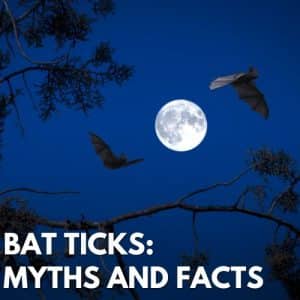
There are about 900 species of ticks recorded in the United States, of which 25 species are more prevalent in the state of Pennsylvania. Among them, two ticks are the most prominent in the state – Blacklegged tick and American Dog Tick. You can find them in the dense and moist regions of Pennsylvania and the forest areas. Most probably, you can find ticks prevalently in the rural and suburban areas of the state, including Happy Valley and Bucks County. This blog will discuss the type of ticks in Pennsylvania and how to prevent them.
Ticks in Pennsylvania:
Rocky Mountain Wood Tick:
These ticks thrive throughout the United States. They are also known as Dermacentor andersoni.
Life cycle:
The life cycle duration of Rocky Mountain Wood Tick is one and three years. The females lay up to 4000 eggs per cycle. The laying of eggs happens from May to June.
The rocky mountain Wood ticks consume blood for two to six days. It is crucial to understand that Rocky Mountain Ticks, in their larvae and nymph stages. Humans are likely to be bit only by adult Rocky Mountain Wood Tick.
Identification:
Female rocky mountain ticks are bigger than males. These females measure just 2 mm to 5.3 mm in length. The ticks become 16 mm in length after consumption of blood. They are flat and oval in appearance.
Disease Transmission:
- The Rocky Mountain Spotted Fever
- Colorado Tick Fever
- Tularemia
Asian Longhorned Ticks:
These ticks are commonly on livestock and domestic animals in the state of Pennsylvania. They are Scientifically known as Haemaphysalis longicornis.
These ticks are native to Asia and were first found in New Jersey in 2017 on a white-tailed deer. These ticks are reddish-brown. While engorged, they become grey.
Reproduction of Asian Longhorned ticks:
These ticks do not need to mate to reproduce. They can reproduce individually. In the process, the females may produce up to 2,000 eggs.
Hosts:
The Asian Longhorned Ticks are likely to consume the blood of large mammals such as cattle, goats.
Disease transmission:
Asian Longhorned Ticks are most likely to feed on livestock and transmit diseases such as bovine theileriosis and babesiosis. These ticks feed on cattle.
Brown Dog Ticks:
Life cycle:
The females lay up to 1,000 to 3,000 eggs. The larvae which arrive from the egg are light brown. The larvae can survive eight months without a blood meal.
The brown dog tick larvae molt into nymphs that look similar to adults. But they tend to be missing genitals.
Brown dog tick consumes blood before laying eggs. The adult brown dog ticks consume blood for 6 to 50 days. The adults preferred hosts are dogs.
In all the phases of the life cycle, these ticks prefer dogs. The females lay up to 7000 eggs in a life cycle.
Description:
Adults are reddish-brown. The adult ticks are 3.18 mm in length. They become a hundred times larger after the consumption of blood.
Diseases:
They are vectors of the following disease-causing microbes:
- Babesia Vogeli
- Babesia canis
- Ehrlichia canis
- Coxiella burnetii
- Hepatozoon canis
- Mycoplasma haemocanis
- Rickettsia conorii
- Rickettsia rickettsii
- Wolbachia spp
The Brown dog ticks cause diseases in both humans and dogs. So it is best to keep one’s pets safe. These ticks can survive both indoors and outdoors.
Blacklegged ticks:
The blacklegged ticks are scientifically known as Ixodes scapularis. This tick is the vector of the threatening Lyme disease. Other diseases caused by blacklegged ticks include babesiosis, anaplasmosis, and Powassan virus disease.
Life cycle:
Their life cycle lasts for two years. The adults consume blood for 4 to 5 days. At the end of spring, the adult female ticks thousands of eggs. In 2016, about 30,000 Lyme disease cases were reported in the United States.
Gulf Coast ticks:
Gulf Coast ticks are more prevalent in the areas of the coastal regions of the United States and Mexico. In Pennsylvania, you can find gulf coast ticks in the regions of Franklin County and its surrounding regions.
Hosts:
The Hosts of Gulf Coast ticks are coyotes, dogs, humans, bears, etc. Birds, rabbits, and rodents are some of the animals preferred by the gulf coast ticks. According to studies, about 85 percent of dog owners in the United States do not know how to identify a gulf coast tick.
Appearance:
The gulf coast ticks can grow up to 3 to 7 mm in length. The larvae of gulf coast ticks are 0.5 mm in length. The Gulf Coast tick nymphs are 0.75 mm in size. Larvae are active in the afternoon. The adults consume blood during the evenings and mornings. The larvae can survive up to 6 months without a meal. Nymphs can live up to 7 months without consuming blood. Unfed Gulf coast ticks can stay up to 16 months. As the larvae age, it tends to prefer water conservation over host hunting.
Medical and veterinary importance:
Laboratory experiments have shown Gulf Coast ticks can transmit the causative agent of leptospirosis (Leptospira Pomona) in livestock. Heartwater, Ehrlichia (formerly Cowdria) Ruminantium, Tick Paralysis are some of the diseases transmitted by Pennsylvania.
Groundhog (Woodchuck) tick (Ixodes cookie) is also funded in the state of Pennsylvania. There is not sufficient information available concerning the Ixodes cookie. These ticks prefer small animals as hosts. These ticks are vectors of the Powassan Virus.
Final Words
Ticks are prevalent all over the US, and it is not an exception in Pennsylvania. It is essential to take preventive measures to protect you and your pets away from tick infection and tick diseases.

